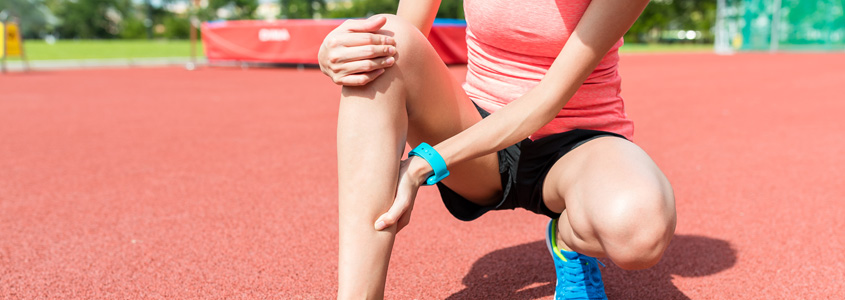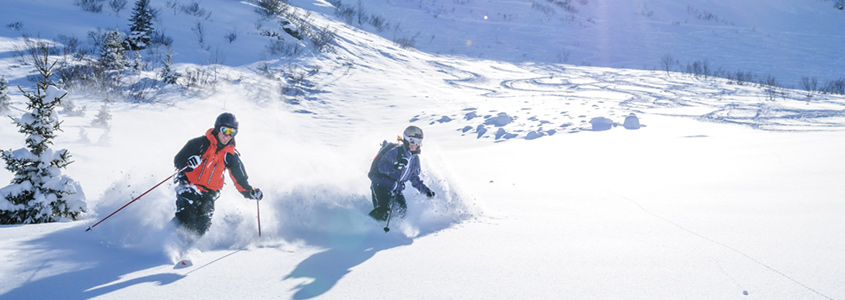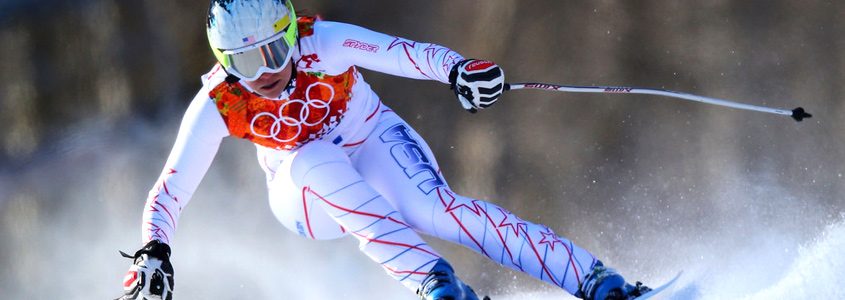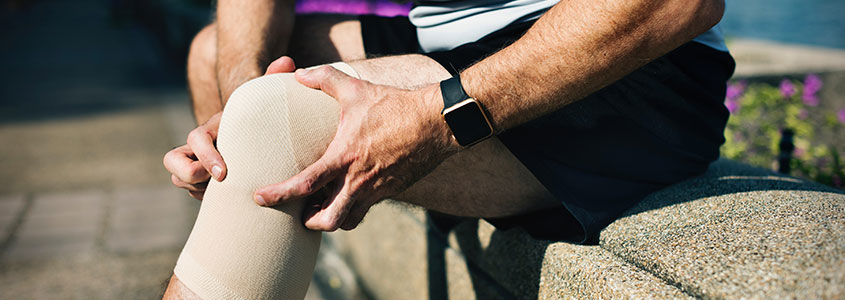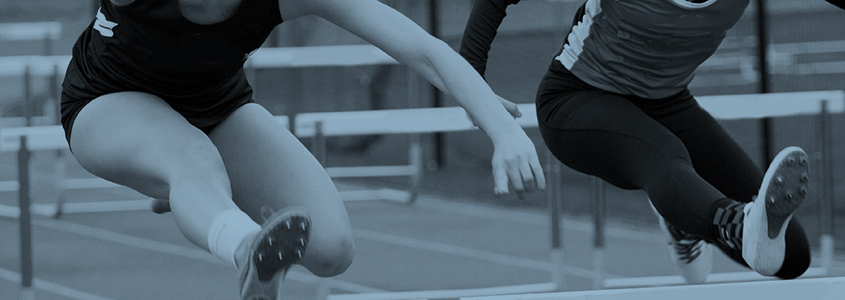Original Article Published on Premax
Article Originally Featured on US News | Images Courtesy of Listopedia
How to foil a common but preventable injury.
“It is very common for women — four to eight times more common than it is for men — to tear their ACL,” says sports medicine expert and orthopaedic surgeon Miho Tanaka, M.D., director of the Women’s Sports Medicine program at John’s Hopkins, “But we also know that 70 percent of ACL injuries occur without collisions, meaning there are things women and girls can do to help prevent this type of injury from occurring.”
Noncontact anterior cruciate ligament (ACL) tears and injuries often occur when an athlete goes to pivot or change direction quickly. The knee gives way and the muscles aren’t there to support it, causing the ligament to tear. However, Tanaka notes, “data shows that doing the right exercises can actually help prevent certain knee ligament injuries — like ACL tears — by strengthening the right muscles.”
A female athlete herself and former collegiate triple jumper, Tanaka shares the following tips to help keep women from experiencing an ACL tear:

1. Maintain a center of strength.
You want to strengthen your muscles, not strain them. Many athletes try to push themselves while working out — run one more minute, do one more rep, lift just five more pounds — but doing so can actually cause strained muscles and lead to injury. Instead, Tanaka suggests concentrating on building and maintaining strength across the board during your workouts.
“Having a strong foundation and strength in the muscles that you use in your sport or activity is what will help prevent injury,” she says. For women specifically, this includes building your core muscles and hamstrings — the muscles that run up the back of your thigh — which help prevent against ACL injuries.
2. Stretch for symmetry.
Having balance between the left and right sides of your body is very important in preventing sports injuries. “Studies have shown that even 15 percent side-to-side differences in flexibility and strength can increase a female athlete’s risk for injury, so it’s important for them to pay attention to any imbalances while stretching,” Tanaka says.
“This imbalance can cause the body’s center of gravity to shift while landing from a jump and places girls at risk for knee injury. Sometimes athletes think that stretching is boring and don’t pay attention while doing this, but subtle things, such as stretching the right side less than the left, can add up and create an imbalance.”

3. Activate the right muscles during exercises.
“Exercises that build the hamstring are very important for women participating in sports and physical activities to help prevent ACL injuries,” Tanaka says. In general, women have less hamstring strength than men, which leads to an inability to control the knee if it gives out during movement.
When doing landing drills, like jumping squats, for example, women need to get down low enough in their squat to activate their hamstrings and build that strength.
4. Eat a well-balanced diet.
“Nutrition does not equal dieting,” Tanaka says. “Generally women don’t eat enough and end up calorically deficient and/or dehydrated, which leads to fatigue.” When athletes are tired and worn out, they tend to stop concentrating on their form. That’s when an injury is likely to happen. Instead, women should concentrate on drinking enough water and eating a well-balanced diet, including fruits, vegetables, low-fat proteins and whole grains.
Research Shows …Retearing Your ACL
A torn ACL can be career-ending. Studies have shown that once an athlete has torn his or her ACL, the chance of re-tearing it is six times greater. Additionally, once a female athlete has torn hers, she becomes 16 times more likely to tear her ACL in the other knee. This is why it is especially important for female athletes to follow the right steps to prevent an ACL injury from happening.
Article by Sasha Kolbeck
Ski season is approaching, and in the US, 50 of 100,000 skiers per day will tear their ACL. Overall, women are 2-8x more frequent to injure. Females are at higher risk for various reasons, some of which can be changed and some which cannot. The modifiable factors for females per Dr. Noyes research are Quadriceps dominance and Neuromuscular control:
- Quadricep Dominance…The hamstring is the guardian of the knee. Women tend to activate the quadriceps, then the hamstring and have decreased hamstring strength, which puts the ACL at risk.
- Neuromuscular Control…sensing, reaction time, and muscle pattern for movement and landing.
The modifiable factors for both male and female include: technique of jumping, cutting, pivoting, fatigue, knee position, and postural control.
What happens if I already have an ACL injury?
Despite the best efforts at modifying the above, you sustain an ACL injury, now what? Research supports the importance of prehab physical therapy to establish baseline for return to sport testing measurements, increase motion and strength, improve outcome, and increase return to sport.
After surgery, research shows physical therapy is again crucial. It should be at least 6+ months in duration. Patients who stopped treatment after 3 months were not able to pass return to sport testing. Treatment should be quality and comprehensive including hands on manual therapy, Blood Flow Restriction (BFR) training, sensory training, strengthening, neuromuscular control, and testing to adjust and progress as appropriate. Long term deficits for months to years including change in brain activation requiring reliance on vision, running deficits, and weakness. Blood Flow Restriction training leads to strength and increased muscle mass, and benefits of heavy resistance training without the strain on healing tissues. (Watch for future article for further information).
How soon can I return to sports after an ACL injury?
After working hard in physical therapy, what is the return to sport timeline? For recreational and elite athletes, it is 9-12 months and for those less than 20 y/o – 12-24 months is recommended. For every month you delay return to sport after ACL reconstruction, the risk of re-injury is reduced by 51%, until 9 months post-operatively. Our local US Ski Team downhill skier, Jaqueline Wiles, will return to competition December 2019, after her extensive knee injury February 2018.
Part of the criteria to return to sport (RTS) includes testing. Of 62 patients, only 3.2% passed all RTS at 6 months and 11.3% at 9 months. It is important to note, that you can still re-injure with passing testing, but your risk is greatly reduced if tested at 9 months and you meet criteria. Testing needs to be comprehensive with multiple tests. Even professional athletes are at a 4x increased risk of 2nd knee injury by not meeting all criteria, so those of us that are recreational, without the same amount of resources, definitely need to put the time in and pass testing.
What is my risk of re-injury after an ACL injury?
What is the data regarding re-injury? The greatest risk is at 1-2 years post injury. ACL graft remodeling takes 12 months for autograft (your tissue) and 24 months for allograft (cadaver). The graft needs loading for healing, but too much can stretch the graft; hence, need physical therapy guidance. Women more commonly re-injure, but the most concerning statistic is 21% for those under age 25. Overall, there is a 20% re-injury rate for those that return to sport. A second ACL surgery has a higher failure rate and decreased patient satisfaction, prolonged physical therapy due to slower healing, delayed return to sport, and decreased performance, so it is best to put in the work and time to decrease risk of re-injury.
How can I prevent an ACL injury?
Research shows the importance of injury reduction programs such as Sportsmetrics®, to decrease the risk of an injury in the first place, or an additional injury. The injury reduction with these programs is a significant 40-65%. Maintaining strength also helps support the knee to decrease risk of arthritis. The added benefit of these programs is increased performance for power, strength, sprint time, agility, single leg hop, and jump height.
In closing, once you are given the go ahead to click into the skis, it’s imperative to continue your strengthening and injury reduction program. And before each ski session, complete dynamic warm ups such as below, to prepare your tissue to tackle the slopes.




About the Author
Rose City Physical Therapy’s Sasha Kolbeck, DPT has extensive experience in knee injury rehab and incorporates sound principles in testing and rehabilitation from the SportsMetrics™ program and extensive research from the teaching and mentorship by George Davis, DPT, MEd, SCS, ATC, FAPTA to provide evidence based knee injury and post-surgical rehab programs.
She provides free community lectures on ACL Injury and Return to Sport as well as Increased Performance and ACL Injury Reduction to local clubs and groups from the youth through adult audience. Contact us for more information, or to express interest in having her present to your group.
Article by Mick Hughes | Featured on mickhughes.physio.com
This question is one that I get asked often by patients who are planning surgery after rupturing their ACL. Unfortunately for my patients, I don’t have an answer that makes them feel warm and fuzzy on the inside.
Read moreArticle by Mike Reinold | Featured on mikereinold.com
Great systemic review in the July-August issue of Journal of Athletic Training reviewing noncontact mechanisms of ACL injuries. Actually the issue has a few articles that I like and will be reviewing in future posts. While none of the information in this article is necessarily new, the authors did a great job putting all the relevant information together in one resource.
Read more
